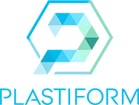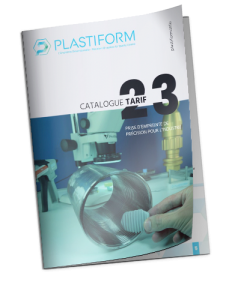1- What is the temperature range for the use of the products ?
We recommend using our products between 0°C and 50°C. It is preferable to use them at room temperature (20°C) for control use.
2- What are the storage conditions ?
Our products must be stored at room temperature (20°C) in their original packaging in order to preserve the technical specifications indicated on the label.
3- What is the polymerization (drying) time of the products ?
Each product has its own polymerization time. Some products have been specially designed to offer a longer polymerization time.
4- How to clean the injection material after taking the impression ?
After each impression, you will have to discard the mixing injector which is not reusable. Don’t forget to disassemble the front nozzle, it is reusable.
The gun and the tip do not need to be cleaned before reuse.
5- Are the products sensitive to U.V. light?
No, our products are not sensitive to this in the short or medium term in the context of their traditional use.
6- What is the life span of the products ?
Unused products can be stored for up to 2 years. A started product can be stored for up to 1 year.
The prints they have no shelf life limit.
7- Can a conventional Rugosimeter be used directly on the impression ?
Yes, the P80 Ra is a product specifically developed for this type of use.
8- Do the contourometers alter the impression ?
We recommend the use of a contact control machine only in the case of a rigid impression after polymerization (> 80 Shores A (or Shore D)).
Using a contact control method on soft impressions may distort the impression during measurement, but will not distort the impression in the long term.
9- What is the minimum diameter for use of the products ?
For very small diameters (< 5mm), it is preferable to use a liquid product and make a total impression. However there is no minimum diameter.
10- Are your products compatible with all metal alloys ?
We always recommend a preliminary test to ensure that your alloy does not create an adhesion with the product.
We have already encountered cases where titanium alloys have prevented polymerization of the product, for example.
11- Are the product or the chemical reaction dangerous?
Our impression products are safe to use and there is no need to use protective covers to use them.
12- How to destroy prints after measurement ?
Prints can be thrown in the traditional waste.
13- What is working time?
Working time refers to the duration during which Plastiform can be manipulated from the moment of its injection and retains its initial consistency. That is, the chemical reaction between the two components has not reached the stage where the impression begins to set.
14- What is curing time?
The curing time refers to the duration from which the impression can be removed from the mechanical part following its injection. That is, the impression has reached approximately 80% of its final hardness, which allows its removal from the form to be replicated.
15- What is polymerization time?
The polymerization time refers to the time required for the impression to reach its final hardness (20 Shore A for F20, 50 Shore A for F50, etc.). That is, the impression can be fully utilized (particularly in terms of dimensional measurements).
1- Are plastiforms polluting products?
Our products are neither polluting nor toxic. Packaging and products are still made of plastic, so they should be disposed of in traditional waste and not in the wild.
2- How and with which product to clean in case of accidental dispersion?
Water or cleaning products should be used in case of accidental dispersion. Do not allow products to enter groundwater, water or pipelines in undiluted form or in large quantities.
1- Within the framework of the REACH regulation, are Plastiform products pre-registered?
None of the chemicals used in the composition of Plastiforms are listed in Annex XVII of REACH.
2- Are Plastiform products dangerous? Are they disturbing when used?
Plastiforms do not present any risk to use. They are neither odorous nor
irritating, however we recommend using vinyl gloves when using them to
prevent any risk. No allergy has been demonstrated so far, but we cannot exclude a risk. If in doubt, consult a doctor.
Refer to the full article on security for more information
3- Is it necessary to have a space arranged to take an impression?
Although they have been developed for use in metrology laboratories, plastiforms can be used in any type of environment (workshops, outdoor, production line, etc.).
However, it must be ensured that the area to be checked is properly cleaned and degreased so as not to affect the quality of the impression. We recommend using the degreaser DN1 which is a Plastiform certified product.
4- How should products be stored?
Products must always be stored between 15°C and 28°C, in their original
packaging and with the cap facing upwards.
The products have a consumption limit of:
– 2 years for cartridge plastiforms, unchanged if started.
– 2 years for malleable products.
Refer to the technical data sheets for more information.
1- Who can use Plastiform products?
Anyone can use the products as long as they comply with the instructions
described in the instructions supplied with each product.
It is not necessary to have training, but we recommend that you follow the instructions on the technical documents to the letter. In case of uncertainty, there is a list of explanatory videos to answer your questions. If this is not the case, do not hesitate to contact us.
2- At what temperature should the products be used?
Our range can be used at any temperature, however the curing time varies
according to the ambient temperature. The warmer it is, the faster the
polymerization will be, while the colder it is, the slower it will be.
The polymerization times written on our supports correspond to a polymerization at 20°C.
3- How do I know which plastiform to use for my dimensional inspection?
We have implemented software capable of highlighting products in relation to a given problem. You can find it by following this link. Feel free to complete the software with additional data (a plan, a description of your needs, etc.) so that our experts can deal with your problem as effectively as possible.
In case of doubt, do not hesitate to contact us.
4- How to correctly extract a plastiform dimensional impression?
Plastiforms are very precise products, which means that once cured, they will remain in perfect contact with the walls of the part, as if glued. In order to extract an impression, it is therefore necessary to ensure that you have a good grip in order to be able to pull energetically in the axis of the impression (never unscrew). For this purpose, the demoulding rings must be used.
5- Can Plastiform products be glued? Do they stick together?
A special glue must be used for elastomer with
cyanoacrylate adhesive. To glue products together, there is no need to use anything, just pour products of the same family one on top of the other, before or after polymerization so that they become one.
6- What do the colors of the products represent?
The colour of the product is only a visual indicator that allows products to be easily distinguished.
7- How to ensure that the products are properly mixed at the outlet of the mixing injector? Or during manual mixing?
At the outlet of the injector, or after a manual mixing, the product must be mixed homogeneously, and therefore be to flow uniformly. If this is not the case, (marbled color) leave the non-homogeneous part on the side until the mixing is done correctly. Then you can take your impression.
8- Are plastiforms stained?
Plastiforms contain a dye, so it is recommended to use a gown before handling the products. In principle, the polymerized product only has to be “extracted” from the fabric to which it has adhered.
If the product has not cured, it should be diluted with water quickly.
9- At what temperature does the final impression deform?
Although plastiforms have been developed for use and measurement in
metrological laboratories (20°C), they are not sensitive to changes in ambient temperature. However, above 120°C, the dimensions of the impression will be altered.
10- Are there any materials to which plastiforms cannot be applied?
It is possible to apply our products to any type of material and its alloys (including gold, silver, titanium). They can also be used on plastic materials, wood, resins, etc. However, certain silicone-based materials should be avoided, as they can sometimes alter the polymerization of the products. We always recommend a test before use.
11- Can an underwater impression be taken?
Impressioning can work without problems underwater, and more generally in any environment without oxygen.
1- What is the purpose of the Double Blade Cutter?
The Cutter has been specially developed to facilitate the use of Plastiform impressions. It allows a slice to be cut in the axis of an impression in order to exploit its profile more easily on optical measuring instruments. The Double Blade Cutter is a product manufactured in France by master cutlers from the Thiers region. It is a top-of-the-range and tailor-made product, customizable according to your needs.
2- What is the purpose of Plastin?
It is an industrial modelling clay, it can be used to substitute a classic modelling clay. Its main advantage is that it is dedicated to the industry, so it is permanently reusable and leaves no traces behind.
As part of the plastiform range, it is used to create barriers to prevent products from flowing into unwanted areas. It is also useful for holding parts.
3- Which injector gun to choose?
The choice of gun depends on the product. For 50mL cartridges, there are only two options, the manual gun (DS-53) or the pneumatic gun (DP-50). The only difference is in the ease of use, users who take repeated impressions will be less embarrassed when using the DP-50. If you use 400mL cartridges, you will need to use DS-400 (manual) or DP-400
(pneumatic) guns. There is also the DB-400, which is a battery gun.
With the DS-73 automatic dispenser, you can also automate the application of plastiform on your production lines. (This one only works with pneumatic guns)
4- Injector and mouthpiece, what are they used for?
The mixing injector is mounted at the end of the cartridge. It is this that allows the two-components to mix together in a homogeneous way before the product is applied. The injector must be changed after each use, it is a consumable. The nozzle reduces the flow rate at the outlet of the injector, so it is mounted at its end. It is recommended for fluid plastiforms, in order to obtain optimal application accuracy in the smallest details. The tip is reusable, it can also be cut to provide more flow.
5- Do you offer services in addition to the sale of your products?
In addition to the marketing of standard products, we can study a specific tailor-made product according to specifications or your specific requests. We can also perform an impression expertise if you send us your parts.
For more specific services, do not hesitate to contact us.



